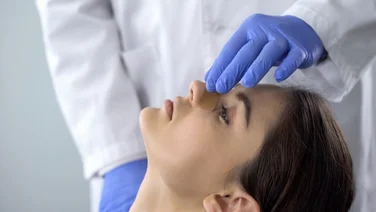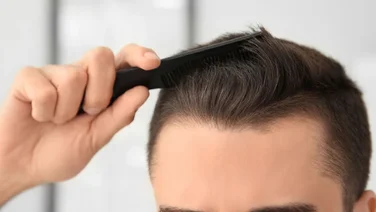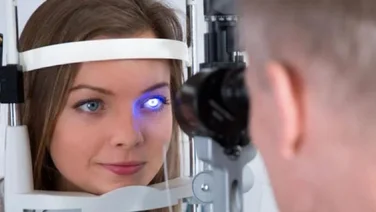Clear aligners, also known as invisible braces, are a modern orthodontic treatment designed to straighten teeth discreetly and comfortably. Made from clear, medical-grade plastic, these removable aligners gradually shift your teeth into their desired positions without the need for traditional metal braces. They offer an effective alternative to metal braces for both teenagers and adults.
Clear aligners can help with:
- Crowded teeth
- Teeth with gaps in between
- Crooked teeth
- Overbite (when the upper teeth extend beyond the lower teeth)
- Underbite (when the lower teeth extend beyond the upper teeth)
- Open bite (teeth that slant outwards so they don’t touch when the jaw is closed)
- Crossbite (where some of the upper teeth rest behind the lower teeth)
- They’re usually not sufficient on their own for severe overcrowding, or treatments that need complex tooth movements, or if you need tooth extraction as well.
Benefits of Clear Aligners
- Discreet appearance: Clear aligners are virtually invisible, allowing you to straighten your teeth without drawing attention to your treatment. This makes them a popular choice for adults and teens who want a discreet orthodontic solution.
- Comfortable: Made from smooth, medical-grade plastic, clear aligners are more comfortable than traditional metal braces, with no wires or brackets that can irritate the gums.
- Removable: You can easily remove them for eating, drinking, brushing, and flossing. This means you don’t need to worry about avoiding certain foods that could damage conventional braces, and it’s easier to clean your teeth.
- Convenient and flexible: Clear aligners offer flexibility in treatment options, including online solutions that provide remote monitoring, allowing you to straighten your teeth from the comfort of your home, or see an orthodontist, which means you can have regular in-person checkups and adjustments.
- Effective for various dental issues: Clear aligners are suitable for treating a wide range of dental issues.
- Faster results: In many cases, clear aligners can straighten teeth faster than traditional braces. Average treatment times range from 6 to 18 months, depending on the complexity of the case, compared to one to three years for traditional braces.
- Affordable options: With both direct-to-consumer and in-clinic options available, clear aligners can be tailored to fit different budgets. Buying online often offers more affordable pricing, while in-person options provide professional oversight and customised care.
What Are the Drawbacks of Clear Aligners?
- Cost: Prices can vary widely, depending on what your treatment requires, and how and where it’s being provided. Generally the range is between £1,500 to over £5,000. They’re not available on the NHS (this also applies to other types of orthodontic treatment for adults).
- Discomfort: Mild discomfort is quite common when you first start wearing clear aligners.
- Not a permanent solution on their own: You’ll usually have to keep wearing a retainer after the treatment, to keep the teeth in their corrected places.
How To Get Clear Aligners
Here’s how the process typically works:
- Initial consultation: For in-person options, book an appointment with a qualified orthodontist or dentist to assess your dental needs. If you’re buying online, many providers offer free at-home impression kits or scanning appointments at designated locations.
- Receive your treatment plan: After your consultation or at-home impressions, a customized treatment plan will be created, showing a digital preview of how your teeth will move over time and the estimated duration of the treatment.
- Begin your treatment: If you opt for direct-to-consumer clear aligners, you will receive a series of aligners shipped directly to your door. For in-clinic options, your orthodontist or dentist will provide the aligners and guide you through the fitting process. The aligners will need to be specially made, so you may need to wait a few weeks to get them. You’ll need to wear them for 22 hours a day. You’ll move on to a new set every one to two weeks.
- Regular monitoring: In-clinic options include regular checkups with an orthodontist or dentist to monitor progress and adjust the treatment plan as needed. If you’ve bought clear aligners online, you can have remote monitoring through virtual check-ins.
- Complete your treatment: Once you’ve completed the series of aligners, you’ll achieve a straighter smile. You will usually need to wear retainers to ensure your teeth stay in their corrected positions.






